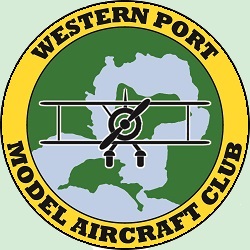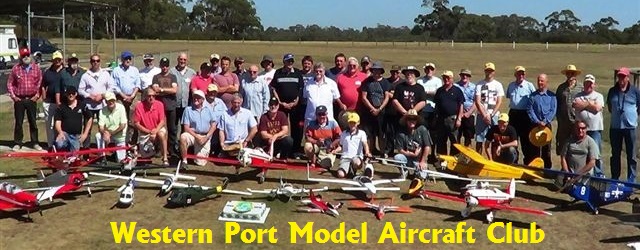Operational Rules & Recommendations
All flyers must make themselves aware of and comply with these Club Safety Rules at all times.
All pilots must be current financial club members, otherwise flying is not permitted.
All pilots must be current financial club members, otherwise flying is not permitted.
Safety and flying rules – all aircraft
| 1 | A flight begins when the engine is started and continues until the model is on the ground and the engine stopped. |
| 2 | Transmitters must be certified when new and after a frequency change. M.A.A.A. frequency compliance sticker must be affixed to all transmitters including “C” tick for 2.4 GHz transmitters. |
| 3 | Before operating any new aircraft or a model having been fitted with a new engine, a noise level check must be carried out, with the result entered into the club noise register. The maximum allowable noise level is 98dBa measured three meters away and at right angles to the exhaust and about 300mm above the ground. |
| 4 | There is no arming of electric planes in under cover area. |
| 5 | You must do a range check at the start of each day before flying. |
| 6 | Engines must not be started before 9 am any day. |
| 7 | All models must be placed in restrainers before starting engines. |
| 8 | Pilots may taxi aircraft directly away from the pits for take-off. The aircraft should be stopped at the end of the taxiway, and clearance sought from pilots already flying before entering the runway for take-off. You must then announce your intention to take-off. |
| 9 | On landing, you may taxi along the runway exit areas but your aircraft and engine must stop before the end of the taxi-way. |
| 10 | Inform other pilots flying of your intention to land. |
| 11 | Give way to aircraft on landing approaches. |
| 12 | Any pilot calling “dead stick” shall take priority to land over all other aircraft flying at the time. |
| 13 | There is a limit of five fixed wing aircraft to be in the air at any one time. |
| 14 | Flying over the pits, car park and club house is prohibited. |
| 15 | For neighbourhood noise minimisation, flying in the north east corner of the field should be avoided unless in case of emergency. |
| 16 | Flying a fixed wing aircraft over or landing through an active helicopter circle is prohibited. |
| 17 | Inform all other pilots flying before moving onto the runway for any reason. You must then move from the runway as quickly as possible. |
| 18 | Only pilots, their assistants and trainees are to be in the pilot box. They must remain in the pilots area whilst flying, except for during take-off, retrieving models or when flying helicopters in the designated helicopter circle. |
| 19 | On days when take-off is the south, flight operations will be for clockwise (right hand) circuits. Taking off to the north, aircraft will fly anti-clockwise (left hand) circuits. |
| 20 | No trainee shall fly solo at any time until they have been authorised by their instructor. |
| 21 | Models over 7 kg must have heavy model certification. |
| 22 | There is to be no smoking while you are refuelling your aircraft. |
| 23 | Lipo Battery charging is to be done within a dedicated bag or the facility provided at the charging area. |
| 24 | On days of Total Fire Ban, there is to be no model aircraft flying at Tucks Field. |
Safety Rules for Helicopters
| 1 | Hovering in pits is prohibited. |
| 2 | Helicopters may only be flown from any of the three designated areas:- |
| A | Helicopter circle at the north end of the runway. |
| B | B. Helicopter circle at the south end of the runway. |
| C | C. General flying area under the same rules as fixed wing aircraft. Hovering must be kept to a minimum in this area. |
| 3 | Helicopter pilots must stand in the circle in which they are flying or the pilot’s box if using the general flying area. |
| 4 | Helicopter pilots must use the circle on the upwind end of the runway. They must not use circles on the downwind end which fixed wing aircraft will fly over when landing. |
| 5 | When flying from any of the designated circles, helicopter pilots must ensure their aircraft do not encroach on the normal flight areas of fixed wing aircraft. |
General
| 1 | A range test should be carried out before the first flight each day. |
| 2 | A check should be made that control surfaces are functioning correctly. |
| 3 | Ensure the area in front of the model is clear and there are no persons near before starting the engine. |
| 4 | Use a starter or “chicken stick” to start your engine. |
| 5 | Remove the glow stick and make any adjustments to the engine from behind the model. |
| 6 | Spectators are not permitted into the flight area and must remain behind the pit fence. |
| 7 | Children must remain behind the pit fence and are not permitted to enter the pit area or pilot box unless they are bonafide trainee pilots. In this case they must be accompanied by their instructor. |
| 8 | Dogs must be kept on a leash at all times and remain behind the timber poles east of the pit area. |
| 9 | The kitchen, field and facilities are to be kept neat and tidy at all times. |
The ongoing future of the club remains dependant on the MAAA insurance coverage. If we operate outside the set rules, liability can be incurred by the club and possibly individuals. This may result in possible deregistration of the WPMAC. It is therefore in everyone’s interest to act responsibly and show consideration to others while we enjoy this fascinating and enjoyable pastime.


